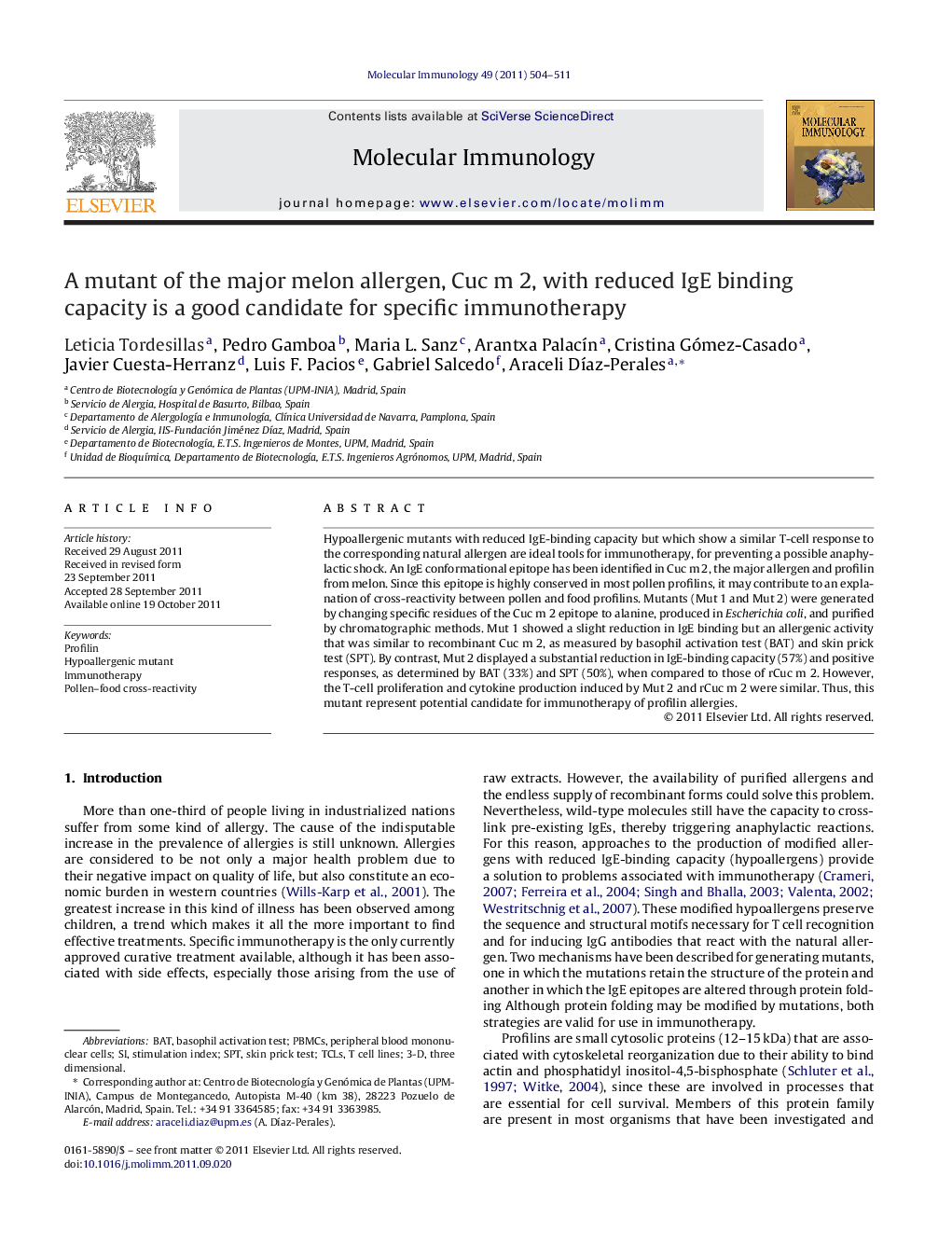| Article ID | Journal | Published Year | Pages | File Type |
|---|---|---|---|---|
| 2831297 | Molecular Immunology | 2011 | 8 Pages |
Hypoallergenic mutants with reduced IgE-binding capacity but which show a similar T-cell response to the corresponding natural allergen are ideal tools for immunotherapy, for preventing a possible anaphylactic shock. An IgE conformational epitope has been identified in Cuc m 2, the major allergen and profilin from melon. Since this epitope is highly conserved in most pollen profilins, it may contribute to an explanation of cross-reactivity between pollen and food profilins. Mutants (Mut 1 and Mut 2) were generated by changing specific residues of the Cuc m 2 epitope to alanine, produced in Escherichia coli, and purified by chromatographic methods. Mut 1 showed a slight reduction in IgE binding but an allergenic activity that was similar to recombinant Cuc m 2, as measured by basophil activation test (BAT) and skin prick test (SPT). By contrast, Mut 2 displayed a substantial reduction in IgE-binding capacity (57%) and positive responses, as determined by BAT (33%) and SPT (50%), when compared to those of rCuc m 2. However, the T-cell proliferation and cytokine production induced by Mut 2 and rCuc m 2 were similar. Thus, this mutant represent potential candidate for immunotherapy of profilin allergies.
► We generated a hypoallergenic mutant (Mut 2) of melon profilin, Cuc m 2. ► This mutant showed affected in vitro and in vivo IgE-binding capacity. ► This mutant maintained its capacity for T-cell activation. ► Mut 2 could be a good candidate for immunotherapy in pollen–food profilin allergic patients.
